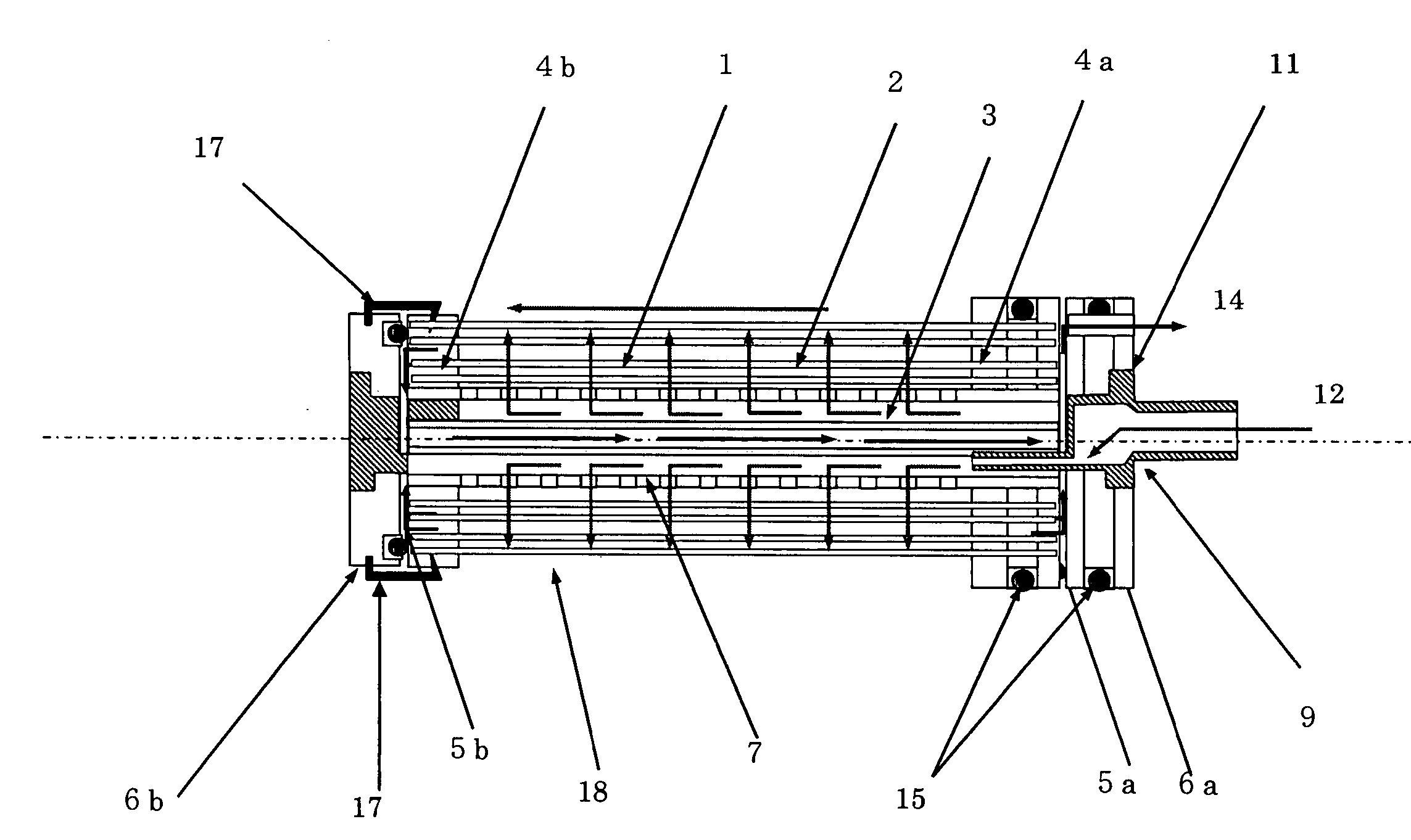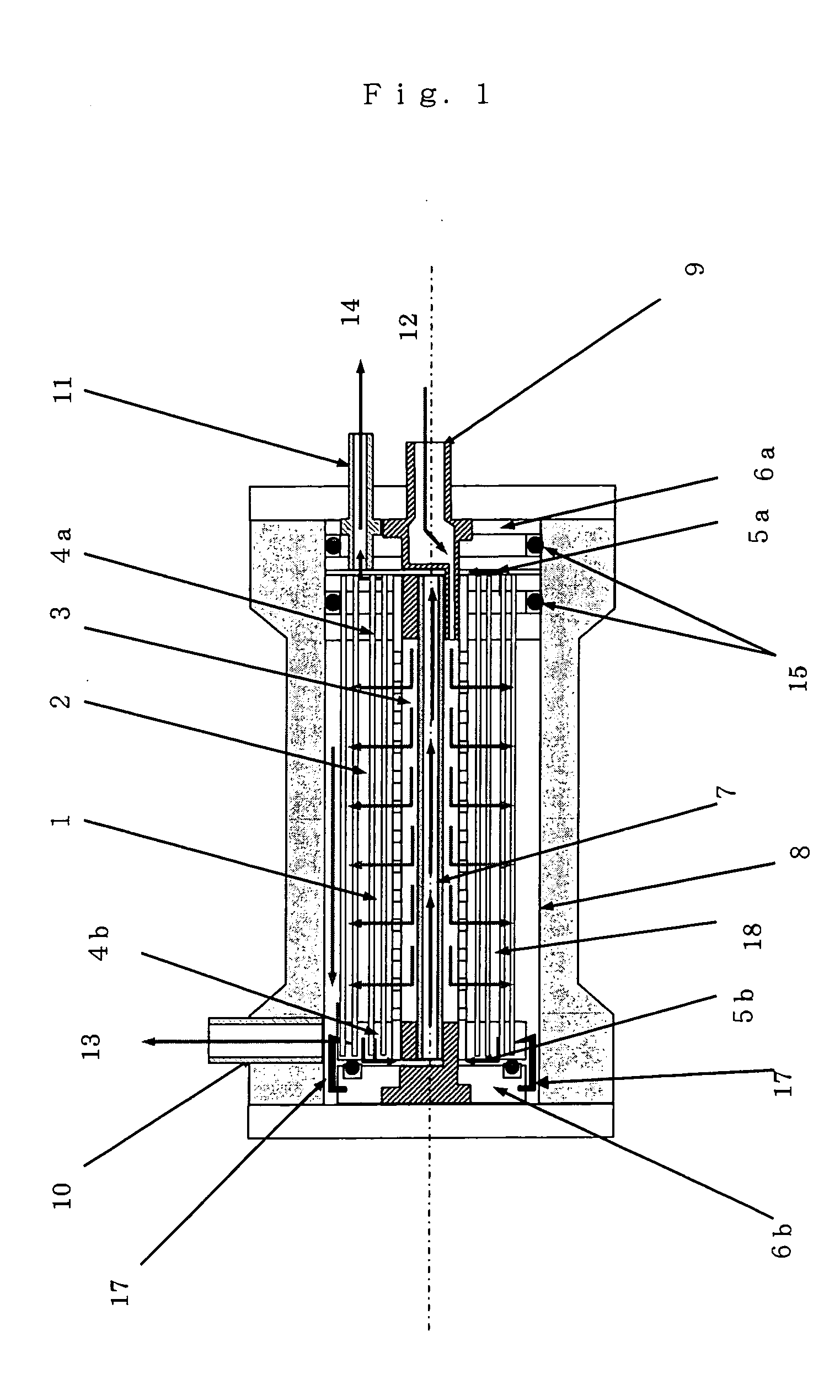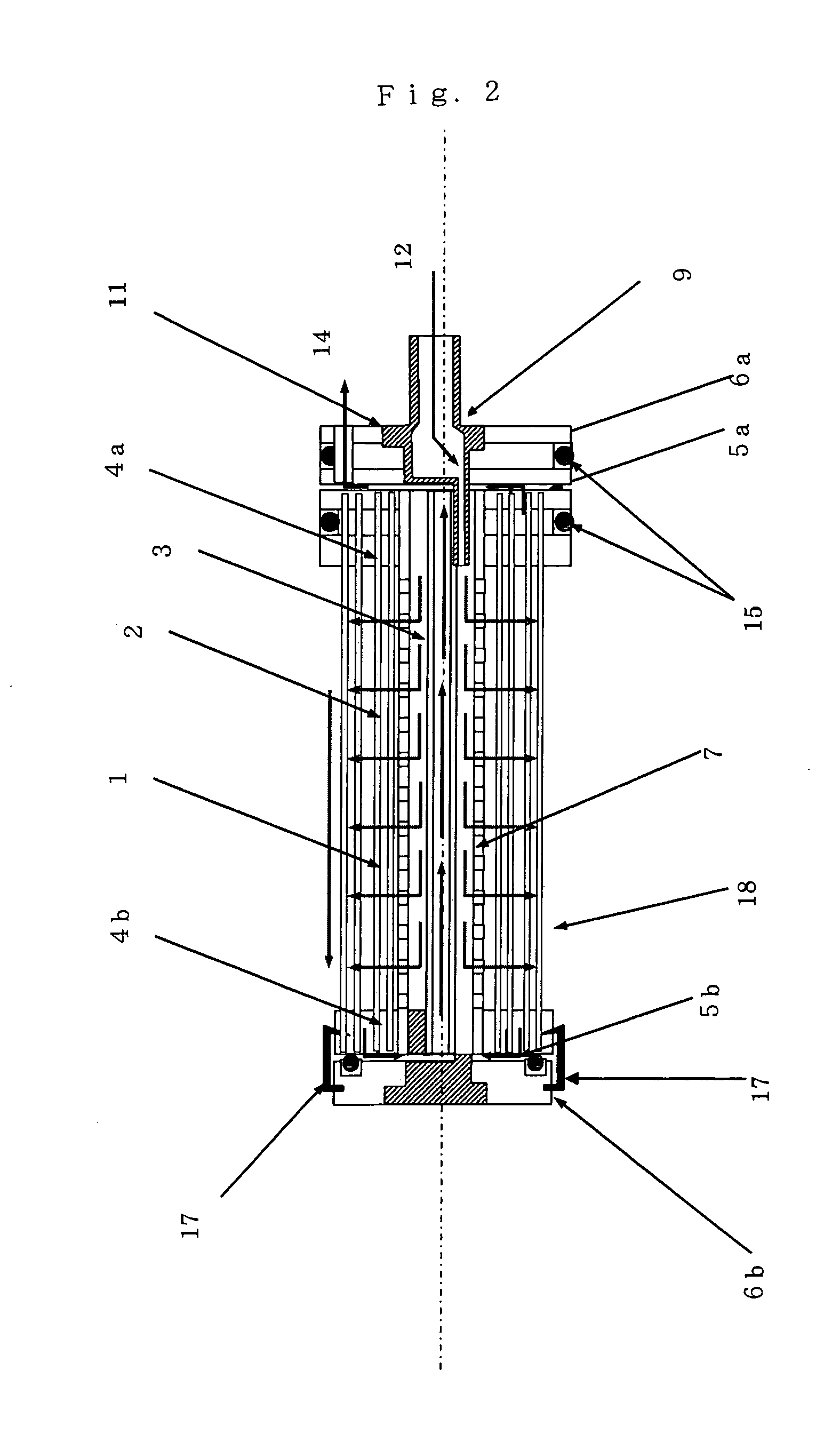Hollow fiber membrane submodule and module including the same
a technology of hollow fiber membrane and submodule, which is applied in the field of hollow fiber membrane submodule, can solve the problems of inability to test and/or examine the open surface of hollow fiber membrane for leakage, disadvantageous in ecology and cost efficiency and the cost of pressure vessel is reduced. , the effect of reducing the number of pipes
- Summary
- Abstract
- Description
- Claims
- Application Information
AI Technical Summary
Benefits of technology
Problems solved by technology
Method used
Image
Examples
example 1
[0104] (Fabrication of Hollow Fiber Membranes)
[0105] Forty parts by weight of cellulose triacetate (acetylation degree: 61.4) was mixed with a solution composed of 18 parts by weight of ethylene glycol and 42 parts by weight of N-methyl-2-pyrrolidone, and the mixture was heated to obtain a solution for forming membranes. The solution was degassed under reduced pressure, and then discharged from a nozzle to travel through the air into a coagulating liquid composed of 65 parts by weight of water at 14° C., 10.5 parts by weight of ethylene glycol and 24.5 parts by weight of N-methyl-2-pyrrolidone, to thereby form hollow fibers. Subsequently, the hollow fiber membranes were washed with water at room temperature to remove excess solvent and nonsolvent, and then treated with hot water. Thus, hollow fiber reverse osmosis membranes made of cellulose triacetate membranes were produced. The obtained hollow fiber membranes had an outside diameter of 137 Mm and an inside diameter of 53 μm. The...
example 2
[0111] Hollow fiber membranes and a hollow fiber membrane element were fabricated in a similar manner to Example 1, and components such as a permeated fluid collector and the like were then attached to the hollow fiber membrane element to form a hollow fiber membrane submodule. Two such hollow fiber membrane submodules were installed in a pressure vessel with an intermediate connector therebetween. A double-type module having a parallel arrangement as that shown in FIG. 5 was thus fabricated. Reverse osmosis treatment was carried out under similar conditions to Example 1. As a result, the salt rejection ratio was 99.5%. Moreover, as in Example 1, after the removal of the hollow fiber membrane submodules from the hollow fiber membrane module, the permeated fluid collector was readily installed in and removed from each of the hollow fiber membrane submodule using a jig. Furthermore, the module was tested for back pressure resistance under a pressure of 2 kg / cm2 for a back flow phenome...
example 3
[0112] Hollow fiber membranes and a hollow fiber membrane element were fabricated in a similar manner to Example 1, and then a permeated fluid collector was secured to each end of the element with snaps in engagement therebetween. A hollow fiber membrane submodule as shown in FIG. 6 was thus fabricated. Two such hollow fiber membrane submodules were installed in a pressure vessel with an intermediate connector therebetween, so as to fabricate a double-type module having a parallel arrangement as that shown in FIG. 7. Reverse osmosis treatment was carried out under similar conditions to Example 1. As a result, the salt rejection ratio was 99.5%. Moreover, as in Example 1, after the removal of the hollow fiber membrane submodules from the hollow fiber membrane module, the permeated fluid collectors were readily installed in and removed from each of the hollow fiber membrane submodules using a jig. Furthermore, the module was tested for back pressure resistance under a pressure of 2 kg...
PUM
| Property | Measurement | Unit |
|---|---|---|
| winding angle | aaaaa | aaaaa |
| winding angle | aaaaa | aaaaa |
| diameter | aaaaa | aaaaa |
Abstract
Description
Claims
Application Information
 Login to View More
Login to View More - R&D
- Intellectual Property
- Life Sciences
- Materials
- Tech Scout
- Unparalleled Data Quality
- Higher Quality Content
- 60% Fewer Hallucinations
Browse by: Latest US Patents, China's latest patents, Technical Efficacy Thesaurus, Application Domain, Technology Topic, Popular Technical Reports.
© 2025 PatSnap. All rights reserved.Legal|Privacy policy|Modern Slavery Act Transparency Statement|Sitemap|About US| Contact US: help@patsnap.com



